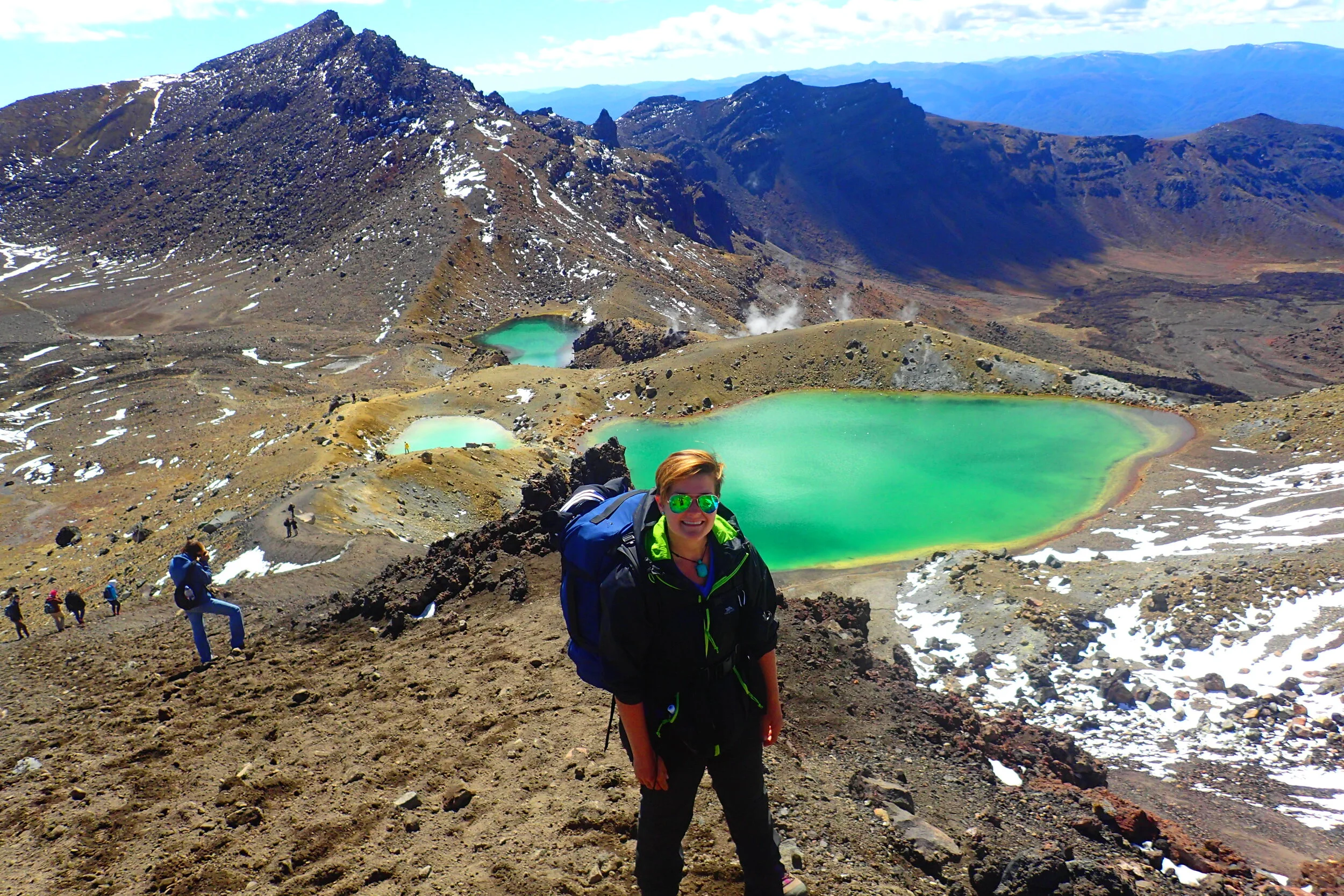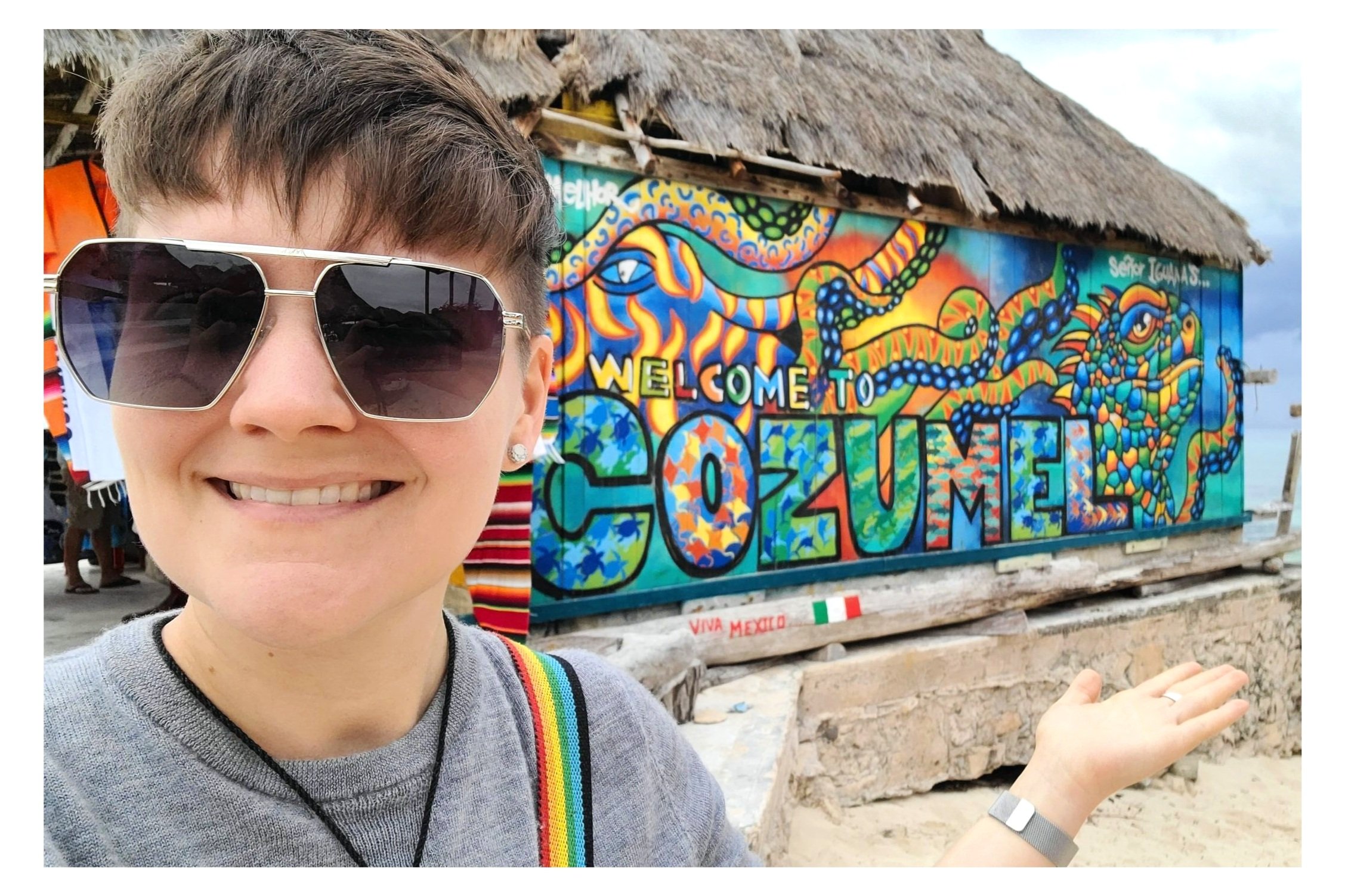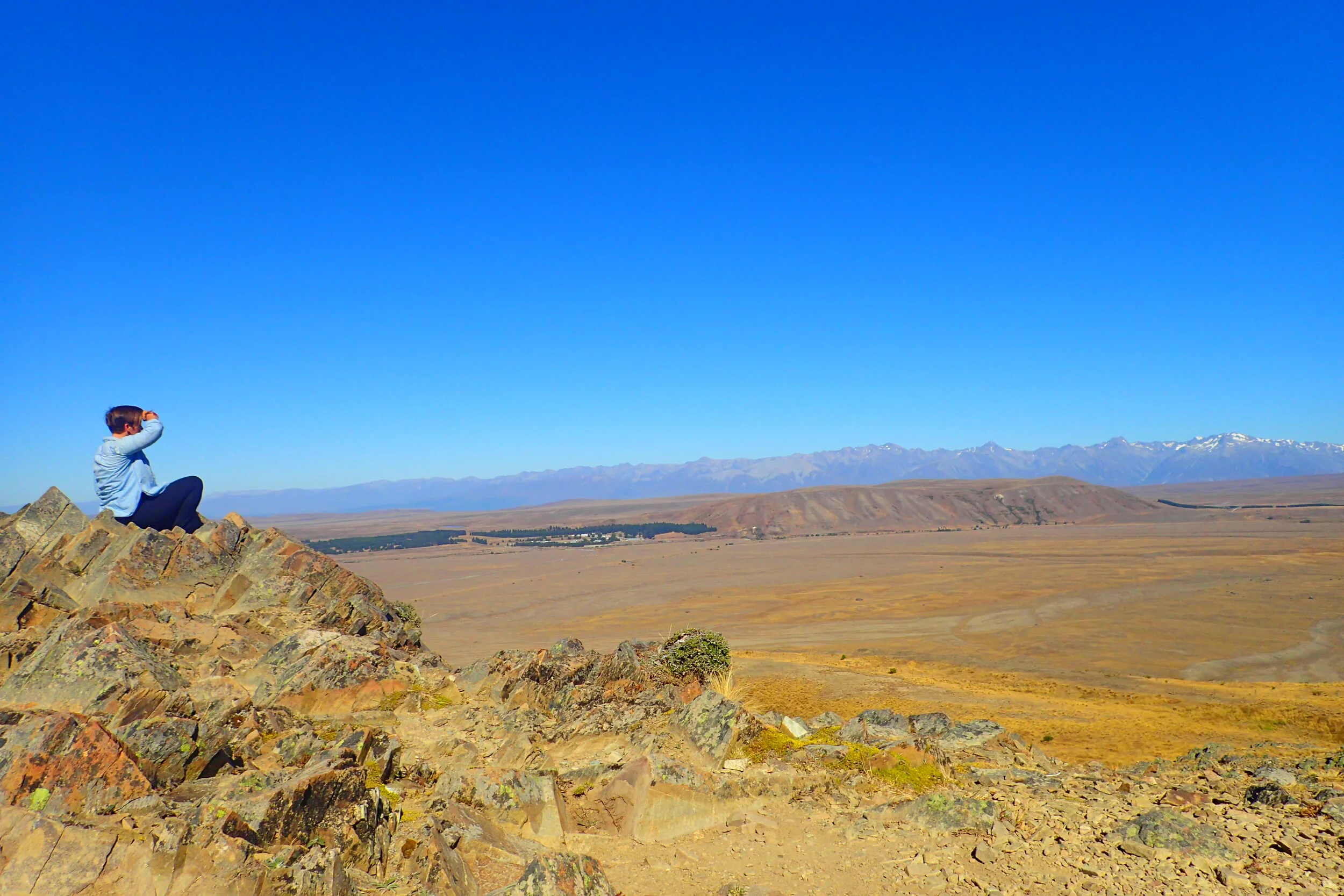I finally visited Mexico over New Years and managed to keep the cost down during this peak travel time. Mexico is not known to be an expensive country to visit. However, the price tag can skyrocket in an island cruise destination like Cozumel.
Not including travel insurance, I spent just over $1000 on 9 days in Cozumel, Mexico. That’s about $115 per day including airfare, accommodation, food, activities, transportation, and more.
I am quite proud of that price tag considering I did everything I wanted to do and even some things I didn’t know I’d do!
So how did I keep the cost down? Aside from travel points for my flights, many of the excursions and activities I did involved finding back ways to experience the same thing without the cost or bargaining my way to a better deal. Check out this full cost breakdown to understand how I spent my money in Cozumel.
I was embarking on the second half of my trip to Europe in July 2022 knowing full well I had a lot less control over what was about to happen.
For one, I would be traveling with Carolina in her part of the world so I let her do most of the planning. We were going to be using her car and using her high quality camping gear for the majority of the trip. Plus, we were going to be traveling with her child.
All of these factors had benefits to me as a solo traveler because it’s always less expensive and fun when you can share the costs of things with locals. What I didn’t anticipate was us all getting sick with COVID-19, diminishing the fun and causing the costs to skyrocket quickly!
In the end, insurance saved me and I got a huge reimbursement bringing my expenses to just under $1500. Not bad for one of the more expensive places in Europe to travel!
Santorini is one of the more expensive places to visit in Greece. The Cyclades-style white-washed homes, blue dome churches, paved pathways, sunset views, restaurant culture, and 5-star luxury hotels make Santorini a top travel destination for people worldwide.
Major touristy destinations are not really my thing. But I wanted to visit Santorini before I even knew just how popular Instagram would make it. I saw one photo of the white-washed homes at sunset and Santorini was on my bucket list back in the late 2000s. Once I learned it was so expensive, I was determined to spend as little as possible.
As I previously wrote about my Greece trip, I was not trying to save like I normally do when I travel. I was splurging after 2.5 years of no international travel. I was also not traveling solo which meant being a little more carefree in my spending. Nevertheless, I managed to strike a balance between enjoying myself and saving. I had a great time, covered a lot of territory, and experienced all I wanted to over 3 days and 2 nights in Santorini for just over $550 total.
My recent trip with an old travel friend to Crete, Greece was an amazing adventure! We spent 8 nights indulging in great food, hikes, beaches, ruins, and lots of history.
I anticipated that costs would be high for this trip right on the cusp of peak season and with inflation going up. But I managed to keep costs down while spoiling myself with a few luxuries.
The trip ended up costing me less than $1200 including all expenses (flights, car rental, accommodation, food, activities, and more). In this post I describe how much I spent so you can best estimate the costs of travel to Crete, Greece.
My friend recently asked me this question. I decided to create a post around my answer.
This is one of those “into my brain” posts. It’s different from my posts on How to Decide Where to Travel—The Practical Deviation and How to Decide Where to Travel—The Personal Deviation. This one is more process-based, where you get to see how my brain works when I start planning for travel. It’s also based on what I do now as a short-term travel soloist.
My process now is budget-based and interest-based with a final look at safety. I have to admit, it’s something I’ve been doing a lot throughout the pandemic. I look up destinations and plan trips I can’t go on yet. Sounds a bit sad writing it like that but this has actually helped me get through this long period of no travel. Now I have several trips in mind, ready to be booked when the time feels right!
I’ve flown twice on JetBlue to New York in the last 4 months since getting vaccinated. One was an unexpected trip and the other was planned. Both were interrupted by the industries labor shortage.
I was reminded how different travel is and will be in the near future.
I hope this post gives a bit more insight into air travel during COVID-19. I provide highlighted tips throughout for folks who are thinking about flying in the US again. This is what you might be in store for, including what’s really happening with COVID-19 safety procedures and the airline industry as a whole.
With Thanksgiving on the horizon, I decided I would do everything in my power to still see my family but in the safest way possible. My plan is to stay with my parents in New York from Thanksgiving through Christmas. Before I go, I will quarantine and get tested. I will drive instead of fly from Florida to New York under strict conditions.
I cannot plan for every possibility and all I can do is minimize risk. But I believe I have the safest plan for making long distance travel possible this holiday season.
Following my guide may make it possible for you to see your loved ones despite the increasing COVID-19 cases, hospitalizations, and deaths in recent weeks.
Years ago, I wrote about my experience couchsurfing all over the world. I never talked about how exactly I got into couchsurfing. The story dates back to 2012 when I spent a summer doing research in England.
I took the train into London on the weekends. On my first weekend there, I met a friendly local who decided to take me in on the weekends. In addition to showing me around all over London, he gave me a place to stay with his roommates so I didn't have to travel back and forth.
I did not expect to learn about couchsurfing and become a huge advocate within the couchsurfing community!
I was hoping to be in another country this month traveling for my birthday. Alas, COVID-19 hit and threw us all for a loop.
No, like, a literal loop. When will this groundhog day end?
Well, it can end tomorrow if you want it to. I am here to report that all is not lost in the way of mixing up your life with travel. I discovered first hand last week, after a stay in a tiny house north of my home in Miami, that domestic and mostly local travel is still an amazing option.
Travel during covid-19 just takes a little, extra creative thinking, planning, and—dare I say it?—deviating! This post includes a brief yet highly necessary overview of what your options are and the precautions you need to take to travel and stay safe.
The reality is that travel just isn't accessible to all. There are so many unfair social and economic structures that prevent people who deserve to travel from doing it.
Working out the two most expensive costs of travel—flights and accommodation—is difficult. I've written about how to accrue frequent flier miles and lower the cost of flights and accommodation. Both were challenging for my trip to Grand Cayman during peak season. But I also had to find things to do that are both fulfilling and low-cost.
The activities you choose when you get to your destination can break your budget if you're nor careful. When traveling to Grand Cayman is in the cards for you, this post includes some ways you can have a great time and still save.
Back in January, I took a vacation for 9 nights to the beautiful, culturally rich Caribbean island country of Curaçao. Typically, a trip like this would cost at least $2,000 in hotel and airfare alone.
My trip cost me about $800 for everything. That included airfare, airbnb stay, car rental, trip insurance, car insurance, local SIM card, all food/meals, diving and snorkeling.
I made this happen through a combination of points, some careful budget planning, and a little luck. In this post, I share the breakdown of what I did to find these deals, including the breakdown of all the costs.
I started planning my trip to Africa when I was 6 years old. Okay, not exactly! I was 6 years old when I saw The Lion King. Since then, I’ve lusted after the country, eagerly awaiting the day I could go.
A great, low-cost trip does not always need advance planning. I planned this trip starting in late January of this year with the majority of the details worked out in March and April.
I don't make a ton of money working in higher education and I live in a high cost-of-living area. So I had to plan this out carefully according to a strict budget. I also had limited time off—about 18 days—to create an itinerary that would hit the highlights. In the end, I managed to cover flights, activities, accommodation, food, and more while keeping the cost under $3000.
You know how people say to "keep your money in different places" when you travel? You know, they say you should split it between your suitcase, your carry on, and even stuff some in your sock.
Well, turns out it's a DAMN GOOD IDEA! Even better, keep an entire wallet (with IDs and credit cards and money) separate from your other wallet. I did this and it saved me a huge hassle while traveling my second time to NOLA.
I also learned what happens when you don't have an ID to show the TSA at the airport. Apparently, this happens all the time and they have a simple procedure in place. Who knew?!
Following from Part 1, this part of the guide to deciding where to travel goes a bit deeper. Actually, it turns the conversation from the outer, external components to your decision and focuses your attention inward.
This post is more specifically for the worriers. The people who have a bit of fear about travel will benefit from this post whether they are worried about getting lost in an unfamiliar place or about not enjoying themselves as much as they thought they would.
This is your guide to the personal considerations when deciding on your travel destination(s).
One of the hardest parts of travel is deciding where to go in the first place. When the world is so enormous and the destinations so numerous, it feels like we'll never see it all. In truth, we most likely won't see it all. So we are left with picking and choosing what we can manage in one lifetime.
If you're like me, you like to be as informed as possible when making any decision. So for the thinkers, the planners, the people who used to be indecisive but now they are not so sure, this post is for you. This is your guide to the practical considerations for making the most informed decision possible about choosing your travel destination(s).
I have an update: I started a new job this week—yay! And there's even more to celebrate: This week marks 6 months that I have been back in the United States! In all of my blogging and reading other people’s travel blogs, I rarely hear people write about the adaptation back into the job market after an extended period of travel. So I've decided to write about it in this post.
I will in no way sugar coat this: Job hunting post-travel is not easy. To give yourself the best possible chance of returning to a job, I will share in this post the tricks I used before, during, and after nearly 2 years of travel without official employment. These tricks include thinking carefully about your reasons for traveling, staying connected to your contacts along the way, and having a "product" to show for your absence.
I had to book two round-trip domestic flights recently. One was from New York to San Francisco, California to visit my friend Erin. Erin recently gave birth to her first baby (I'm an Auntie!). The other flight I booked is from New York to Nashville, Tennessee. I'm heading to the famous "Music City" in 2 weeks to celebrate the 30th birthday of my friend Dasha of Dancin' Down Them Dirty, Dusty Trails.
Both Erin and Dasha are my closest friends from the USA and we all love to travel and go on adventures. I jumped on the chance to book flights to spend quality time with each of them. Of course, I did not spend more money than I had to because I used a combination of miles/points to pay for them. In this post, I give a brief overview of how I earn tons of miles and points to cover the cost of airfare. I also explain the exact process I went through to find available award flights and the best value for redeeming miles and points for these flights.
The best way to avoid roaming charges and other heightened fees for talk, text, and data overseas is to use a local SIM card at your destination. SIM cards give you access to a local phone number and the plans are usually pretty cheap, e.g. $10-$30 for 30 days.
Many people opt to use Wi-Fi while they are abroad. This is certainly an option to consider—especially if you're only going to be at your destination for a few days. But even for those few days, you may want to consider a local SIM card for some of the benefits it offers.
I used local SIM cards in most of the countries to which I traveled during my 15 month trip around the world. Along the way, I learned a lot about when it is and is not a good idea to get one and what to do to make life easier when setting up and using a SIM card abroad.
I'm an out and proud tech nerd. I love when all of my devices sync up perfectly, run smoothly, and produce quality results—and I go mad when they don't! So you better believe I had one of the most seamless tech setups I could muster for my travels.
In this post, I finally share with you exactly what my tech setup entailed for my 15 months of travel around the world.* You'll get to find out how I took a photograph on my digital camera and made it jump to my phone, to my cloud storage, and then onto my laptop in one fell swoop.
Of course, I include pros and cons for the big stuff and you'll also learn about all the little accessories, apps, and additional pro-tips and tricks I applied to make this tech work to my great advantage. My secret? Move out of the way Macbooks, it all starts with the Windows Surface!
First of all, hiiii!! I'm back in the USA! And Happy Thanksgiving to all of my friends and family who celebrate! Since I am back in New York, I've decided to do an update on my packing list after 14+ months of traveling around the world. I first posted about the contents of my one bag over a year ago. Looking back, it's actually amazing how little the contents changed. I suppose this speaks to how well I did my research before I left! *Patting self on back*
The items that did change are quite interesting. Well, I think they're interesting. Anyway, bear with me as I describe the contents of my bag. What's been added. What's been removed. Then I'll give you a downloadable finalized packing list for long-term world travel. It's in checklist format so you can easily use it to help you prepare for your own trip! Yay!















![How to Decide Where to Travel: The Personal Deviation [Part 2 of 2]](https://images.squarespace-cdn.com/content/v1/53b6ec86e4b09a1fb529c6b8/1466135190761-45GJ3BS24CRTNTICK4IR/P2187235.JPG)
![How to Decide Where to Travel: The Practical Deviation [Part 1 of 2]](https://images.squarespace-cdn.com/content/v1/53b6ec86e4b09a1fb529c6b8/1466133761153-CUY4HZLHS84OSN9FG0LT/P4239036.JPG)




